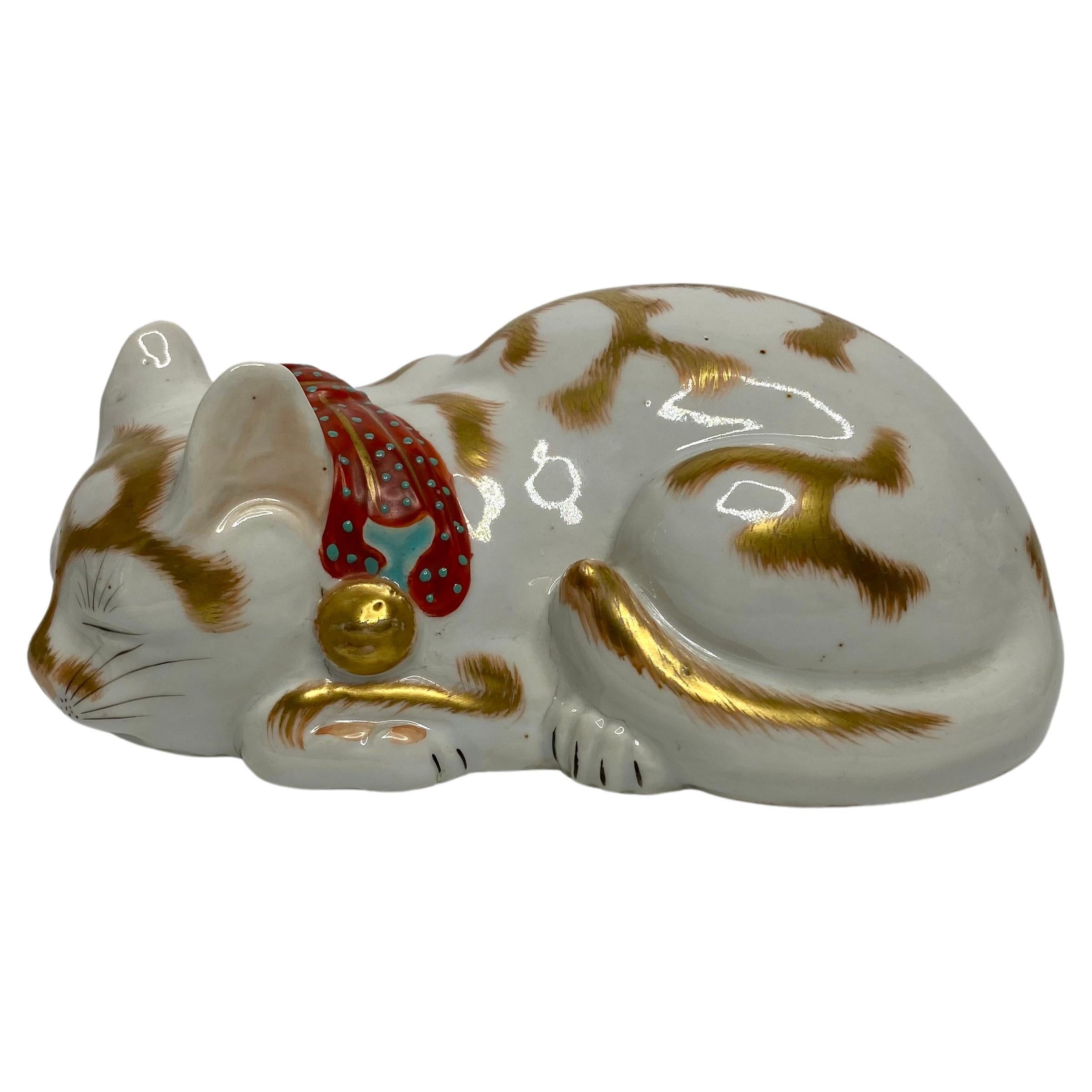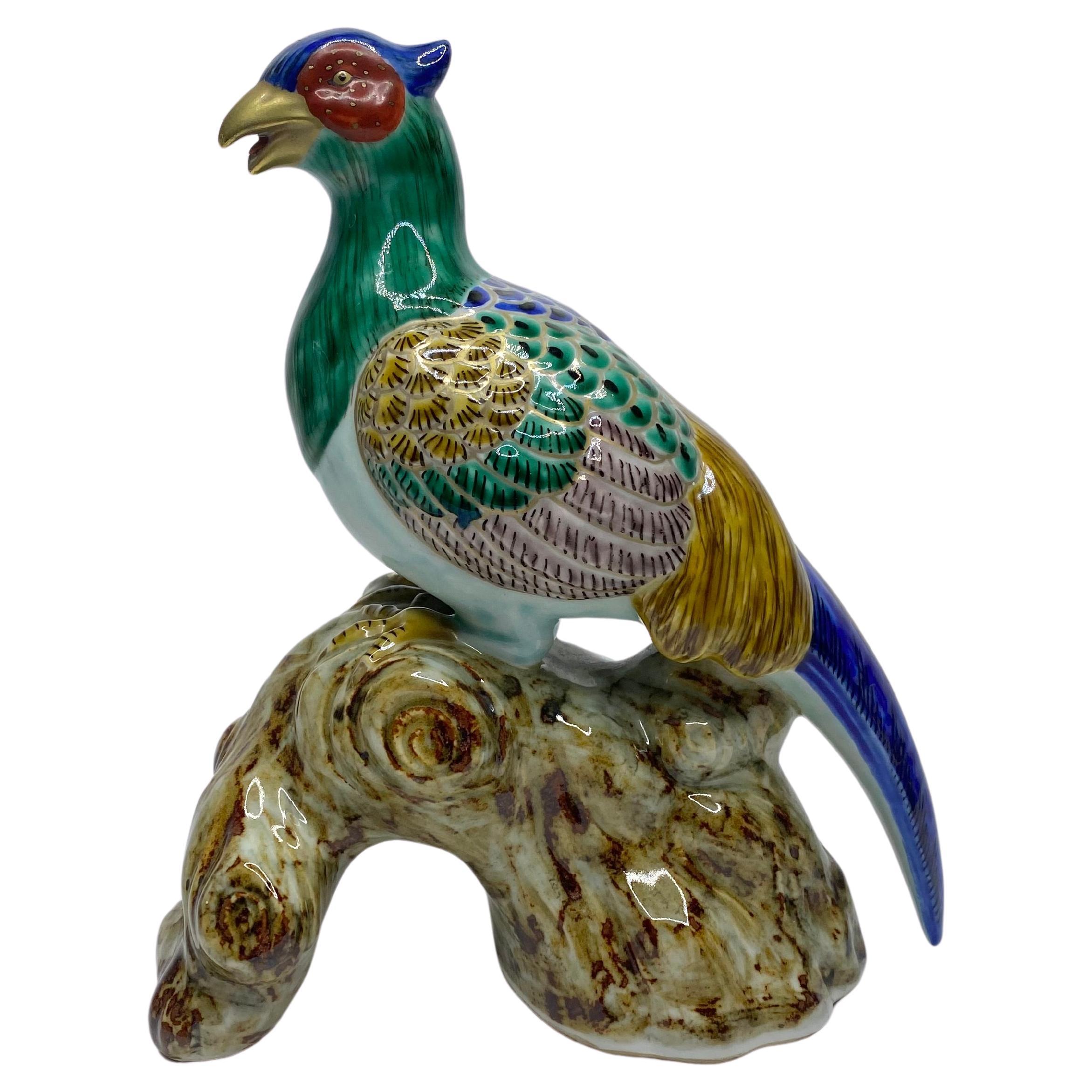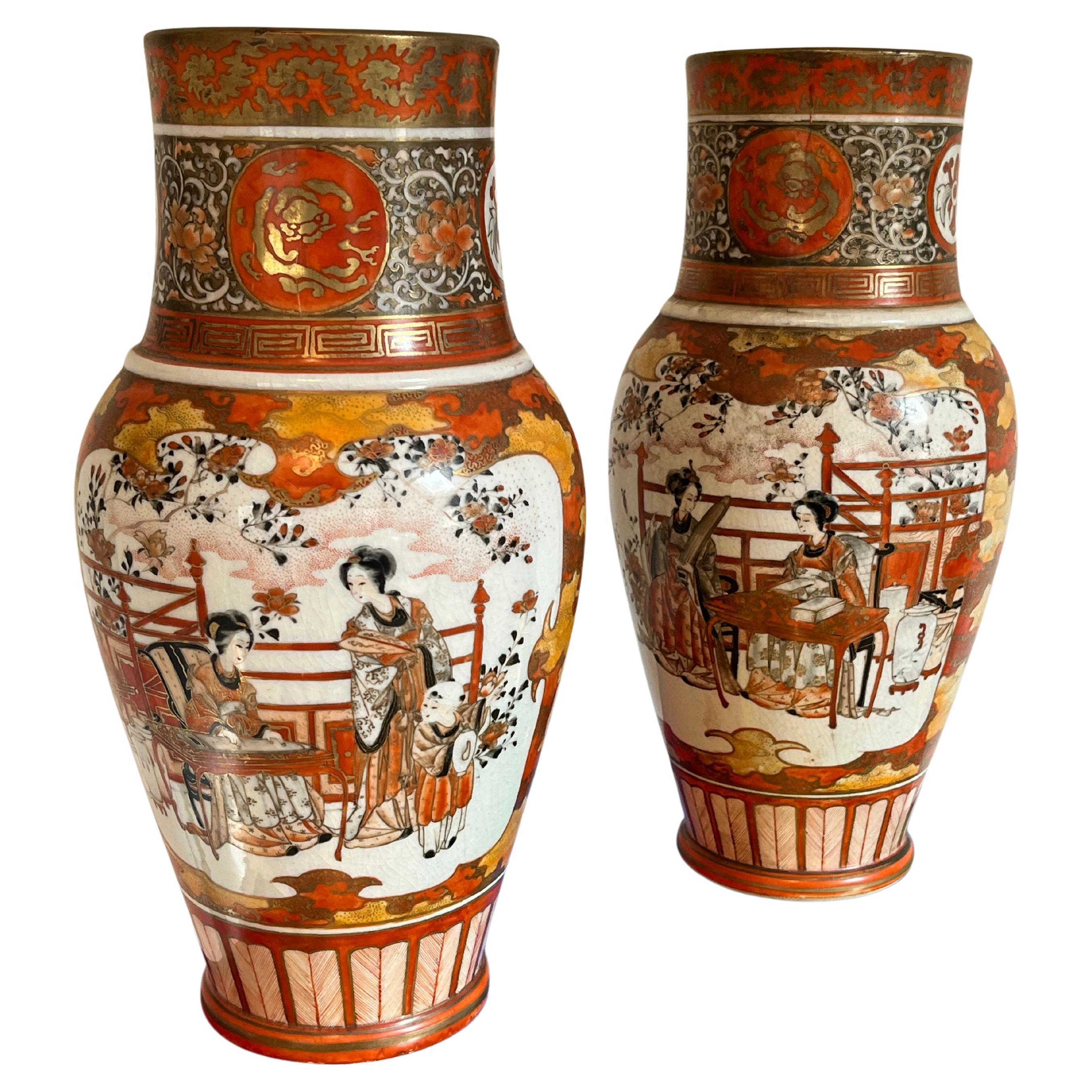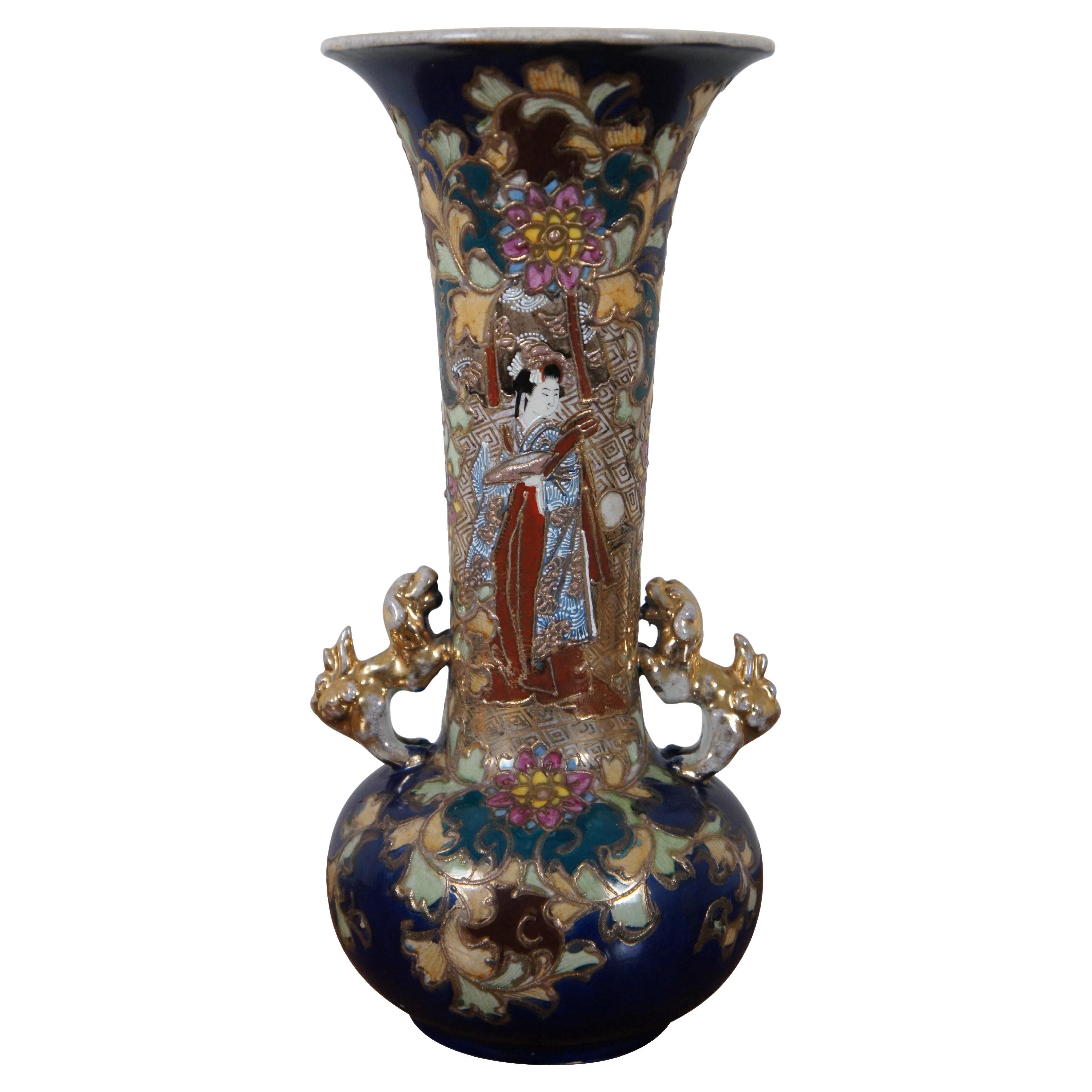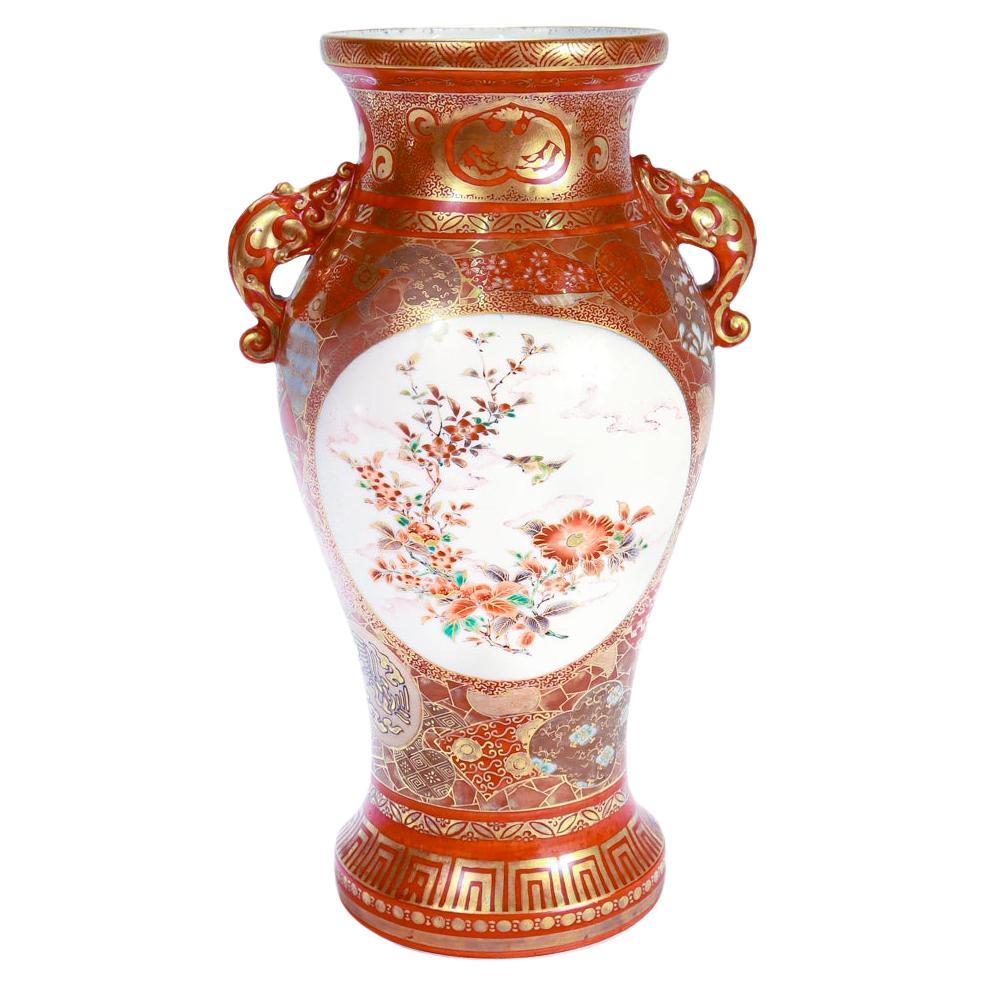Items Similar to Pair of Japanese Meiji Period Porcelain 'Kutani' Foo Dogs
Want more images or videos?
Request additional images or videos from the seller
1 of 7
Pair of Japanese Meiji Period Porcelain 'Kutani' Foo Dogs
About the Item
A pair of fine quality Japanese Kutani foo dogs in rich polychrome enamels over porcelain. The pair date to the Meiji period (1868-1912) and are in lovely condition for their age.
Kutani ware is a style of Japanese porcelain traditionally from the Kutani region which is now part of Kaga, Ishikawa. The name is divided into two periods of manufacture, initially from the 17th and 18th centuries and then a revival in the 19th century.
Kutani ware is often marked by vivid dark colours that epitomise lavish aesthetics. It's thought that the long harsh and grey winters of the Hokuriku region led people there to desire ceramic wares with bold colours.
Measure - 18.5cm high
- Dimensions:Height: 7.29 in (18.5 cm)Width: 6.3 in (16 cm)Depth: 4.34 in (11 cm)
- Style:Meiji (Of the Period)
- Materials and Techniques:
- Place of Origin:
- Period:
- Date of Manufacture:Circa 1890s
- Condition:Wear consistent with age and use.
- Seller Location:Brisbane, AU
- Reference Number:
About the Seller
New to 1stDibs
Joined in the past six months.
No Reviews Yet
Vetted Seller
These experienced sellers undergo a comprehensive evaluation by our team of in-house experts.
1stDibs seller since 2023
- ShippingRetrieving quote...Ships From: Brisbane, Australia
- Return PolicyA return for this item may be initiated within 14 days of delivery.
More From This SellerView All
- Japanese Octopus Water Dropper, c. 1830sLocated in Brisbane, QLDA Japanese Hirado ware water dropper used in calligraphy dating to the Edo Period (1603-1868). The whimsical, molded design features an array of sea creatures and shells on the base ...Category
Antique Early 19th Century Japanese Edo Ceramics
MaterialsCeramic
- Chinese Tongzhi Porcelain Vase Decorated in Polychrome Enamels with Bronze MountLocated in Brisbane, QLDThis exquisite polychrome Chinese vase has been mounted with bronze mounts and has previously been in two private collections. The vase dates to the reign of Chinese Emperor Tongzhi ...Category
Antique Mid-19th Century Chinese Ceramics
MaterialsBronze
- Aesthetic Period Porcelain Wall Bracket by Royal WorcesterBy Royal WorcesterLocated in Brisbane, QLDA marvellous 1870s period porcelain wall bracket by English maker Royal Worcester. The porcelain bracket has a rich turquoise ground which has been softened with a matte 'rust' glaze...Category
Antique Mid-19th Century English Aesthetic Movement Wall Brackets
MaterialsPorcelain
- Japanese Plique-a-Jour Cloisonne VaseLocated in Brisbane, QLDThis plique-a-jour cloisonne vase is an exceptional example of Japanese craftsmanship from the tail end of the Meiji period (1868-1912). The most remarkable thing about this delicate...Category
Early 20th Century Japanese Meiji Vases
MaterialsMetal
- Brownfield's for Tiffany & Company Porcelain Oyster PlateBy William Brownfield, Tiffany & Co.Located in Brisbane, QLDA very fine porcelain oyster plate with gilt seaweed design by English company Brownfields for retail by Tiffany & Company. The cream plate has a ruffled edge and features raised whi...Category
Antique 19th Century British Serving Pieces
MaterialsPorcelain
- Pair of Ormolu, Onyx, Malachite & Hardstone 'Oinochoe' Ewers, Circa 1870Located in Brisbane, QLDThis pair of Grand Tour era ewers are in the 'oinochoe' shape and date to circa 1870. The pair are miniature in size and comprise of ormolu (gilt bronze), malachite, onyx and hardsto...Category
Antique 19th Century European Grand Tour Vases
MaterialsStone, Malachite, Onyx, Marble, Bronze, Ormolu
You May Also Like
- Kutani porcelain cat, Japan, c. 1900, Meiji Period.By Kutani StudioLocated in Gargrave, North YorkshireKutani porcelain okimono of a cat, c. 1900. Meiji Period. £490.00 Kutani porcelain okimono, Japan, c. 1900. Meiji Period. Finely modelled as a sleeping cat, its hair delineated in g...Category
Antique 1890s Japanese Meiji Ceramics
MaterialsPorcelain
- Kutani porcelain Green Pheasant, Japan, Meiji Period.By Kutani StudioLocated in Gargrave, North YorkshireKutani porcelain okimono of a Japanese Green Pheasant, Japan, Meiji Period. The pheasant modelled, perched upon a large gnarled branch. Decorated in typically vibrant enamels, and he...Category
Antique Early 1900s Japanese Meiji Ceramics
MaterialsPorcelain
- Antique Meiji Period Kutani Japanese Porcelain Temple JarLocated in Lambertville, NJAntique Meiji period Japanese porcelain temple jar with intricate hand painted decoration and gilt. The jar in Classic Kutani colors with floral and phoenix birds all over the top an...Category
Antique 1880s Japanese Meiji Ceramics
MaterialsPorcelain
- Pair of Meiji Period Kutani VasesLocated in Doylestown, PAA fine pair of Japanese porcelain vases in the Kutani manner, hand-painted with figural panels depicting women engaged in various occu...Category
Antique 19th Century Japanese Meiji Ceramics
MaterialsPorcelain
- Antique Japanese Meiji Era Porcelain Satsuma Figural Kutani Vase Fu Dogs GeishaLocated in Dayton, OH"Late Meiji era Kutani vase, circa 1903. A beautiful porcelain blue ground centered by an intricate Geisha flanked by gold figural Foo Dog handles. Features a floral and foliat motif throughout. Signed along the base. Kutani ware, Japanese porcelain made in Kaga province (now in Ishikawa prefecture). The name “Old Kutani” refers to porcelain decorated with heavily applied overglaze enamels and produced in the Kaga mountain village of Kutani. The powerful Maeda family had established a kiln there by 1656. The clay bodies used were gray and coarse-grained. On most pieces—dishes and bowls were especially common—a white or blue-white matte glaze was decorated in dark, restrained colours, initially greens, yellows, and some reds, and later purples and dark blues. Some items had cobalt blue decoration under a white glaze. The most noted Old Kutani pieces are “Green Kutani,” in which most of the surface is covered in a green or blue-green glaze to which one or two colours have been added (or the glaze is applied evenly over a design executed in black). The bold designs of Kutani ware drew freely from Chinese ceramics, paintings, and textiles. They are renowned for their rich pictorial ornament executed in lively, intense lines. Owing to local financial problems and difficulties in obtaining the necessary pigments, the Kutani kiln was abandoned some time in the Genroku period (1688–1704). Ceramics production in Kaga enjoyed a renaissance early in the 19th century, however, including the establishment of another kiln at Kutani in the 1820s. In addition to a revival of the styles of Old Kutani ware, there arose a style using gold on a coral-red ground, which was perfected during another spate of activity that began in the 1860s. Technical advances were made and Western-style pigments were adopted, and by the 1890s modern Kutani...Category
Antique Early 1900s Meiji Vases
MaterialsPorcelain
- Antique Japanese Meiji Period Kutani Porcelain Vase by Shoundo / Matsumoto SaheiLocated in Philadelphia, PAA fine antique Japanese Meiji period Kutani porcelain vase. By Matsumoto Sahei/Shoundo. In an aka-e style decorated throughout in iron red with extensive gilt accents. There are c...Category
Early 20th Century Japanese Meiji Ceramics
MaterialsPorcelain
Recently Viewed
View AllMore Ways To Browse
Chinese Porcelain Blue And White Chinese Porcelain
Chinese Nanking Vases
Asian Very Thin Porcelain Bowls
Japanese Satsuma Box
Imperial Nippon Hand Painted Vase
Antique Chinese Cloisonne Sold
Joseon Dynasty Pottery
Asian Green Glaze Pottery
Joseon Dynasty Furniture
Celadon Bird Motif
Chinese Porcelain Blanc De Chine Goddess Guanyin
Large White Italian Porcelain Asian Sculpture
Pair Of Chinese Flambe Foo Dogs
Porcelain Chinese Dragon Statue
Tung Chih
Yui Tsujimura
19c Chinese Export Blue White
8 Inch Female Foo Dog
